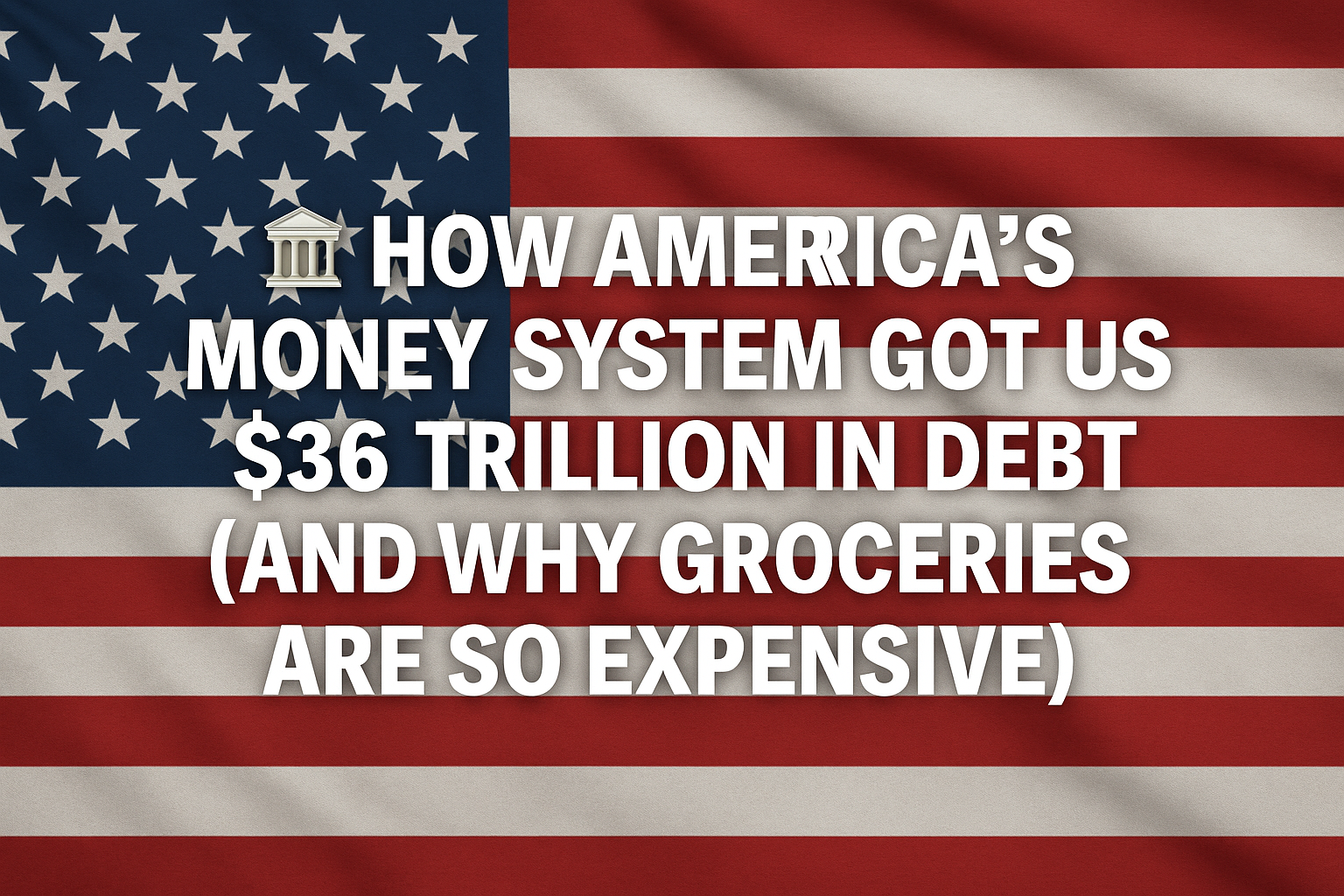🏛️ How America’s Money System Got Us $36 Trillion in Debt (And Why Groceries Are So Expensive)
Introduction
Ever feel like your dollar just doesn’t stretch like it used to? You’re not wrong. The U.S. is now over $36 trillion in debt, and $100 barely fills a grocery cart. How did we get here? Let’s take a quick journey through 150 years of America’s monetary policy to find out.

🇺🇸 A Timeline of U.S. Monetary Policy
🔗 1870s–1930s: The Gold Standard Era
- The U.S. dollar was backed by gold, limiting how much could be printed.
- This kept inflation low but made it hard to respond to economic crises.
- During the Great Depression, the system made things worse.
- In 1933, FDR ditched the gold standard domestically to allow more government spending.
🌎 1940s–1971: Bretton Woods System
- After WWII, the U.S. dollar was tied to gold, and other currencies were tied to the dollar.
- But spending on wars and social programs pressured this system.
- In 1971, Nixon cut the gold tie completely. The dollar became a fiat currency (backed only by trust).
💸 1970s–1980s: Inflation and The Volcker Shock
- Oil shocks and easy money led to high inflation (stagflation).
- Fed Chair Paul Volcker raised interest rates above 15% to stop it—causing a recession but restoring the dollar’s value.
📉 1990s–2008: Low Rates and Deregulation
- The Fed kept rates low. Financial deregulation led to booms and busts (dot-com, housing).
- National debt began climbing, especially after 9/11 and the 2008 crash.
🏦 2009–2020: Post-Crisis Stimulus
- Massive government borrowing and Quantitative Easing (QE) fueled recovery.
- Debt grew from $10T to $23T.
- The Fed kept rates near zero for years.
🦠 2020–2023: COVID and Inflation Comeback
- COVID stimulus ($5T+), supply chain issues, and more QE sent prices soaring.
- Inflation hit 9% in 2022, the highest since the ’80s.
- The Fed reacted with rapid interest rate hikes.
🧾 2024–2025: Where We Are Now
- $36 trillion in debt, driven by:
- War spending
- Tax cuts
- Social programs
- COVID relief
- Rising interest payments on old debt
- Even as inflation slows, prices stay high—and people feel squeezed.

📉 So Why Does $100 Feel Like $20 Now?
Because the dollar has lost about 97% of its value since 1913. That’s what happens when money supply grows faster than the economy. Here’s what that looks like:
📊 Chart: U.S. Debt vs. Dollar Value (1913–2025)
🧠 Final Thoughts
America’s journey from gold-backed money to fiat currency helped make the economy more flexible—but also more vulnerable to debt, inflation, and overspending. Today’s $100 may feel weak, but it’s the result of decades of compounding policies.
If you’re wondering why your grocery bill is skyrocketing, this is the story behind it.
– Man Who Knows Nothing




